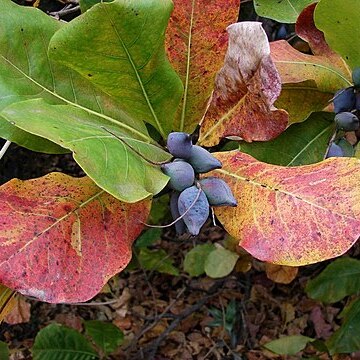Tree to 11 m high, deciduous. Branchlets appressed pubescent. Leaves crowded; lamina broadly obovate or obtriangular, 10–20 cm long, 6–14.5 cm wide, 1.1–1.7 times as long as wide, attenuate or shortly truncate at base, obtuse or obtusely acuminate at apex, discolorous, becoming almost glabrous, a few hairs on veins beneath; domatia usually present; petiole 4–15 mm long. Spike open, c. same length as leaves. Flowers 5–7 mm long, 6–7 mm diam. Calyx pubescent or thinly pilose; lobes triangular, c. 2.5 mm long, c. 2 mm wide. Staminal filaments c. 2 mm long. Disc villous. Style glabrous. Mature fruit ovoid, slightly compressed, sometimes somewhat angled, slightly beaked, 2.5–4 cm long, 1.7–2.5 cm wide, succulent, smooth, dark red to black; immature fruit distinctly compressed and ridged.

